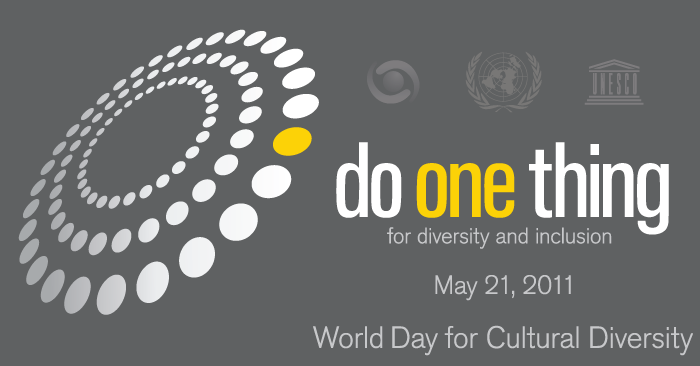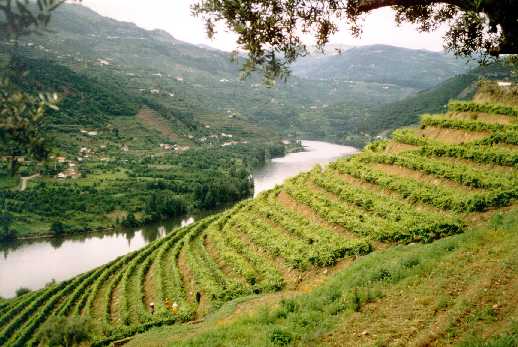guest |
October 5th, 2012
“Take a stand for teachers!” is the slogan for this year’s World Teachers’ Day.

1.7 million teachers are needed for 2015
The aim of the day is to mobilize support for teachers world wide. Taking a stand for the teaching profession means providing adequate training, ongoing professional development, and protection for teachers’ rights.
A quality education offers hope and the promise of a better standard of living across the globe. There can be no quality education without competent and motivated teachers, however, which is why World Teachers’ Day aims to recognize the great efforts of teachers world wide.
Read more.. »
guest |
August 23rd, 2012
Today is the International Day for the Remembrance of Slave Trade and its Abolition.  This date was chosen by UNESCO to mark a night in 1791 in the island of Saint Dominic (now Dominican Republic and Haiti) when a major uprising took place which significantly contributed to the abolition of the transatlantic slave trade.
This date was chosen by UNESCO to mark a night in 1791 in the island of Saint Dominic (now Dominican Republic and Haiti) when a major uprising took place which significantly contributed to the abolition of the transatlantic slave trade.
A purpose of this day is to highlight the shamefulness of colonial slave trade, to remember the millions of people who suffered from it, and to come to terms with the past injustice…
Read more.. »
Today is the International Day for Cultural Diversity for Dialogue and Development! Although the name of the day sounds complex, the purpose of this day is fairly simple: to celebrate cultural diversity and help us learn to live together better. In November 2001 UNESCO adopted a Universal Declaration on Cultural Diversity.

Do One Thing for Diversity
The following year, 2002, was the United Nations year for Cultural Heritage and at the end of that year the UN declared may 21st to be the International Day for Cultural Diversity for Dialogue and Development.
Ever since then, May 21st has been celebrated and commemorated through seminars, various educational programs and campaigns, exhibitions, and concerts. A grass-root campaign sponsored by UNESCO, ‘Do One Thing for Diversity and Inclusion,’ is trying to engage the international community through social media. According to the UN Secretary General Ban Ki Moon the campaign is calling for “from youth to policy-makers, from religious leaders to journalists, entrepreneurs and others who shape opinions and trends.”
Read more.. »
Today is World Press Freedom Day. On 2011, UN Secretary-General Ban Ki-moon,
Navi Pillay, UN High Commissioner for Human Rights, and
Irina Bokova, UNESCO Director-General all declared in a joint-message that:

Freemedia
“Violations of fundamental human rights cannot go unanswered. State authorities must do everything to counter impunity and to protect the safety of journalists. We will never forget the courage of journalists who paid with their lives for our right to know. ”
World Press Freedom Day was established to highlight Article 19 in the Universal Declaration of Human Rights which states that, “Everyone has the right to freedom of opinion and expression; this right includes freedom to hold opinions without interference and to seek, receive and impart information and ideas through any media and regardless of frontiers.”
Read more.. »
 UNESCO and the International Music Council have declared April 30th 2012 the first International Jazz Day!
UNESCO and the International Music Council have declared April 30th 2012 the first International Jazz Day!
UNESCO is organizing a Jazz concert at the UNESCO head quarters in Paris, and is anticipating the day to “bring together performers, educators, governments, experts, and fans alike, as they explore together the history, meaning, impact, and legacy of jazz music throughout the world.”
The one and only way to celebrate International Jazz Day is to listen to some jazz. After all, even Louis Armstrong once said: “If you have to ask what jazz is you will never know.”
Read more.. »
In 1982, the International Council on Monuments and Sites (ICOMOS) proposed to the UNESCO to launch an International Day for Monuments and Sites. This day was approved a year later, in 1983, and International Day for Monuments and Sites has been celebrated since on every April 18th.

Douro Vineyards, Portugal
According to UNESCO, the aim of this day is to “explore cultural heritage… and to encourage local communities and individuals to consider the importance of cultural heritage to their lives, identities, and communities.”
Every year the International Day for Monuments and Sites holds a theme. The theme last year, 2011, was Cultural Heritage of Water. This year’s theme, World Heritage and Sustainable Development: the Role of Local Communities, marks the 40th anniversary of the UNESCO World Heritage Convention.
Read more.. »
Will globalisation lead inevitably to a collision of civilisations?
Today we are witnessing numerous ethnic and religious conflicts, nationalistic trends in policy and regional fundamentalist movements. The International Year for the Rapprochement (bringing together) of Cultures aims to demonstrate the beneficial effects of cultural diversity in order to stem this tide. UNESCO is playing a leading part in building “the defences of peace in the minds of men” through education, science, culture and communication. The official website emphasises tolerance in an era of globalisation as many influential politicians believe that globalisation will inevitably lead to more conflict.
Read more.. »



 This date was chosen by UNESCO to mark a night in 1791 in the island of Saint Dominic (now Dominican Republic and Haiti) when a major uprising took place which significantly contributed to the abolition of the transatlantic slave trade.
This date was chosen by UNESCO to mark a night in 1791 in the island of Saint Dominic (now Dominican Republic and Haiti) when a major uprising took place which significantly contributed to the abolition of the transatlantic slave trade.

 UNESCO and the International Music Council have declared April 30th 2012 the first International Jazz Day!
UNESCO and the International Music Council have declared April 30th 2012 the first International Jazz Day!

 Hello, I'm Deborah Swallow and, for the last fifteen years, I've worked in over thirty countries addressing the complexities of people working internationally across multiple cultures, so individuals and organisations alike can gain an authentic competitive edge and win in international markets.
Hello, I'm Deborah Swallow and, for the last fifteen years, I've worked in over thirty countries addressing the complexities of people working internationally across multiple cultures, so individuals and organisations alike can gain an authentic competitive edge and win in international markets. 